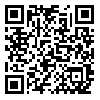BibTeX | RIS | EndNote | Medlars | ProCite | Reference Manager | RefWorks
Send citation to:
URL: http://bcn.iums.ac.ir/article-1-45-fa.html
A B S T R A C T
The applications of neurophysiological therapy techniques range far and few in the realm of modern day medicine. However, the concept of electromagnetic stimulation, the basis for many noninvasive brain stimulation (NIBS) techniques today, has been of interest to the scientific community since the late nineteenth century. Recently, transcranial direct current stimulation (tDCS) and transcranial magnetic stimulation (TMS), two noninvasive neurostimulation techniques, have begun to gain popularity and acceptance in the clinical neurophysiology, neurorehabilitaion, neurology, neuroscience, and psychiatry has spread widely, mostly in research applications, but increasingly with clinical aims in mind. These two neurophysiological techniques have proven to be valuable assets in not only the diagnosis, but also the treatment of many neurological disorders (post-stroke motor deficits, tinnitus, fibromyalgia, depression, epilepsy, autism, ageing and parkinson’s disease). Its effects can be modulated by combination with pharmacological treatment that has undergone resurgence in recent years. In this review we discuss how these integrated technology like NIBS for evaluation in the clinical evidence to date and what mechanism it work for stroke rehabilitation particularly. Then, we will review the current situation of stroke rehabilitation in Iran and new hopes that NIBS could bring for clinicians and patients in this nationally prioritized field.
دریافت: 1389/8/2 | انتشار: 1389/5/24
| بازنشر اطلاعات | |
 |
این مقاله تحت شرایط Creative Commons Attribution-NonCommercial 4.0 International License قابل بازنشر است. |



